Why the medieval fortified church was built into a castle.
An enormous effort. Was it worth it?
How does the saying go? “Extraordinary circumstances demand extraordinary measures”. And that doesn’t only apply to today.
We find ourselves in the 15th century, and construction of the church is in full gear. You can see the workers before you, chiseling away at the stones, doing carpentry, and busily moving building materials around.
Amid this bustle of activity, a decree comes from the emperor in 1482: Friedrich III gives the order to fortify the two market towns of the “Eisenärtzt”, in other words Innerberg (today’s Eisenerz) and Vordernberg.
And what happens? They begin to strengthen the former cemetery walls, which already stood around the church, and extend them to create a ringed wall.
Yet that was just the beginning!

Die einstige Wehrkirchenanlage um 1500 nach einer Skizze von Albrecht Gfall 1968
Help, the Turks are coming!
In 1529, the Turks advance towards Vienna and, from this point on until the mid 1630’s, the fortified church grows into a mighty castle refuge. The east gate is strengthened by means of a gatehouse and a ditch before it, while the walls are raised and further strengthened, with arrow slits and machicolations added. Wooden battlements are built, the former west entrance is walled up, and access from the north is defended by means of a mighty barbican with two imposing semicircular towers and a pincer gate.
But that was still not all: Within the walls, a well was dug in order to supply the populace with water in the event of siege. Finally, so that people could “answer the call of nature”, a latrine was created in a bay along the wall – also complete with an arrow slit, of course.
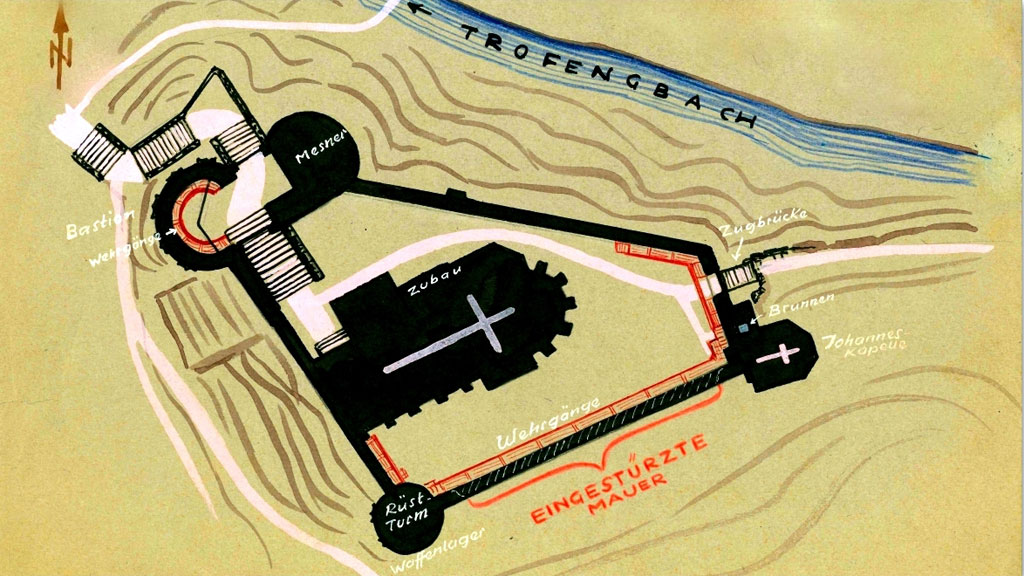
And so, the former fortified church was transformed into a castle refuge, well equipped to protect the locals from attack and siege. However, the Turks never came.
Castle protection from the bishop
If you now think that our castle bastion never saw “action”, you would actually be quite mistaken. Even while the Turkish threat was still very real, Protestantism was spreading out across Austria, and was quickly adopted by the mine owners and miners of Innerberg – to the point that, by the mid 16th century, Innerberg was predominantly Protestant and the fortified church castle was firmly in the hands of Lutherans. Just 50 years later, however, the Counter Reformation was being pursued with full force. Yet the Protestant citizens of Eisenerz initially “dug in” against Martin Brenner, the bishop of Seckau at that time, until, with the support of Ferdinand II and a force of 316 well-armed men, he ultimately compelled them to surrender. As a consequence, the majority of the people of Innerberg reverted to the Catholic confession, while those who refused to renounce Lutheran teachings were exiled
Southern defensive wall falls into disrepair
For centuries, the walls ringing the church castle withstood external influences. And yet, on Easter Saturday in 1967, a 35-meter segment of the southern wall collapsed.
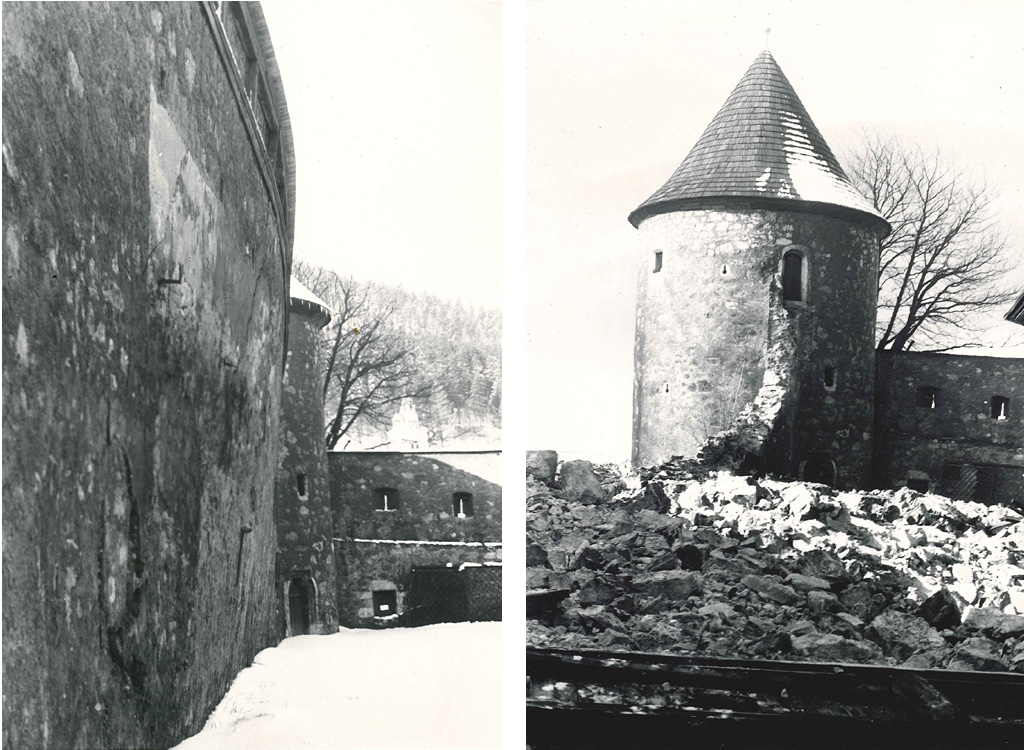
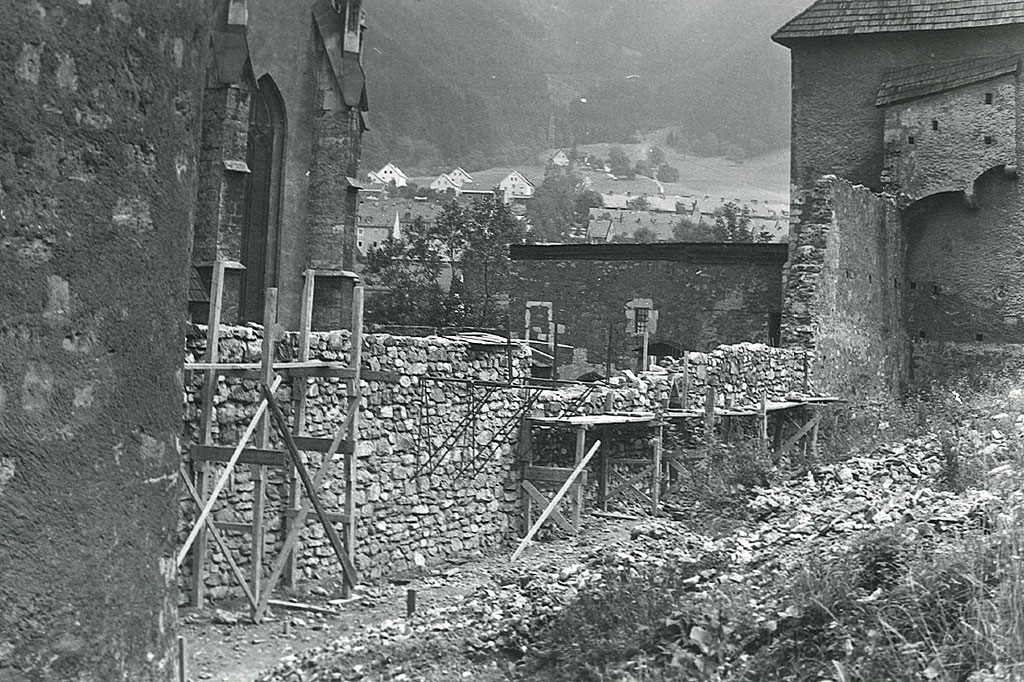
Three years later, reconstruction had been completed.
Today, the church-castle of St. Oswald is one of the biggest fortified churches still preserved in Austria!
How a small chapel was transformed into a mighty church.
Did it manage to weather the centuries unscathed?
Eisenerz town clerk and local historian, Leopold Ulrich Schiedlberger, takes us on a journey back to the times of the 13th century: Emperor Rudolf I has just vanquished King Ottokar of Bohemia and is now traveling through the new crown lands of Styria, Carinthia and Carniola, to the very borders of Venice.
According to legend, on the feast day of St. Oswald he reaches Innerberg and lays the foundation stone for the building of a church in honor of the saint, which began in 1279. This small Late Romanesque church will serve as the spiritual center for Innerberg miners for almost 200 years.
But by 1470, under Emperor Friedrich III, a new and far larger Gothic church had been commissioned. Work on the church progressed rapidly. Only two years later, the presbytery with the old sacristy had been completed, used – until completion of the church nave – in order to celebrate services.
Innerberg and the church in flames
The year 1492 marks a major turning point in the history of Eisenerz. The market town, with all of its ancient writings, privileges and freedoms, falls victim to flames. And the fire does not halt, even before the as yet still under construction St. Oswald’s Church.
Emperor Maximilian orders that the work be continued nonetheless. On 1 July 1512, this house of God and its altars are consecrated by Bishop Leonhard von Lavant.
Newer times – newer appearance
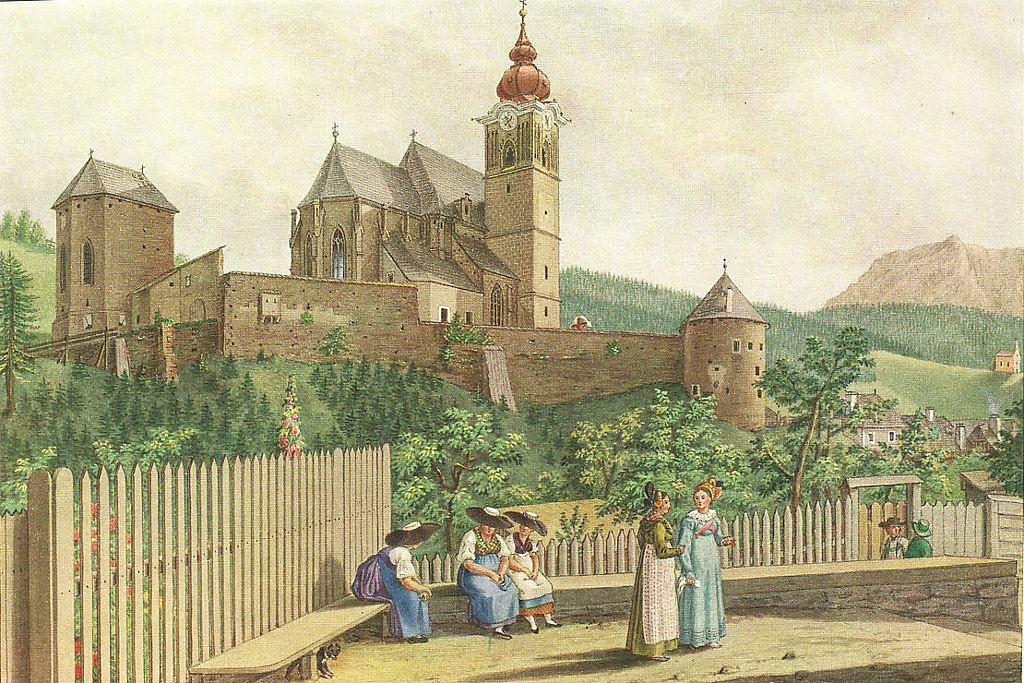
In the 18th century, striking changes are made to the exterior and interior of our parish church. In 1768, a Baroque onion dome is added to the Late Gothic church tower, which would characterize the appearance of this house of worship for the following 130 years. The inside of the church is appointed with Baroque altars, which would also remain until 1910.
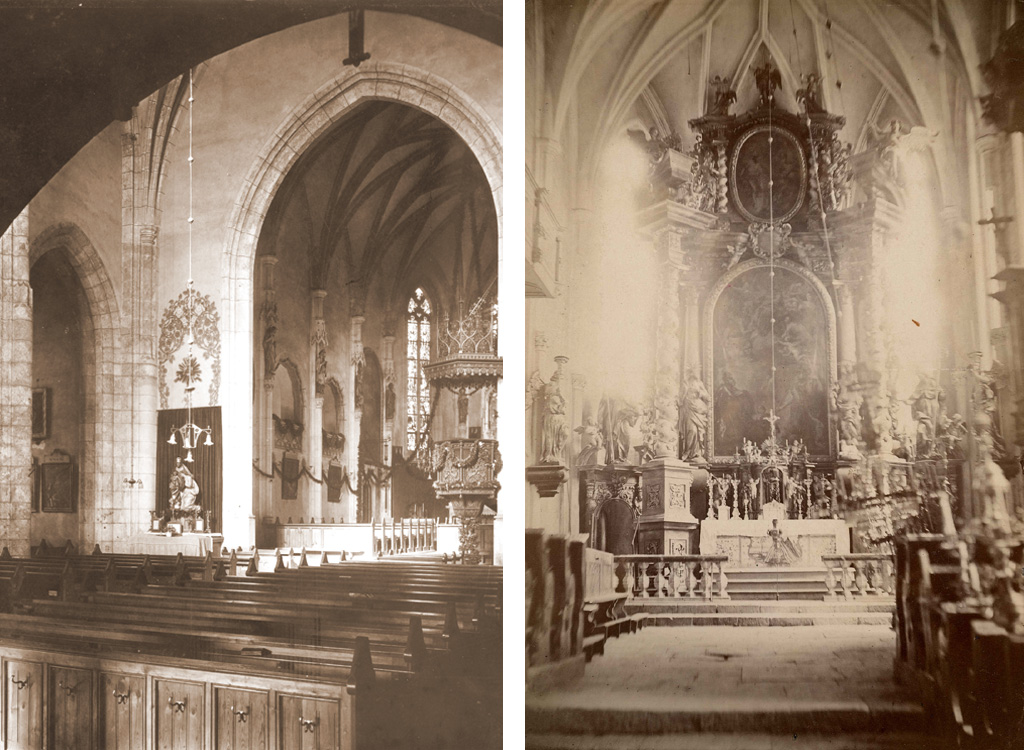
The appearance of St. Oswald’s Church as we recognize it today came about in around 1900. In the course of complete in- and exterior renovations, Neo Gothic elements were added, along with new altars, figures and glass windows, as was a new pulpit. Likewise, the church tower and the new sacristy acquired today’s form.
Church interior acquires a steel celebratory altar by Graz artist Gustav Troger towards the end of the 20th century, consecrated in 1993.
Further structural changes are made in 2005 within the framework of renovations on the building facades. The west door, which had once been walled up in the face of threat from Turkish invaders, was reopened, revealing views of the town’s historical district.
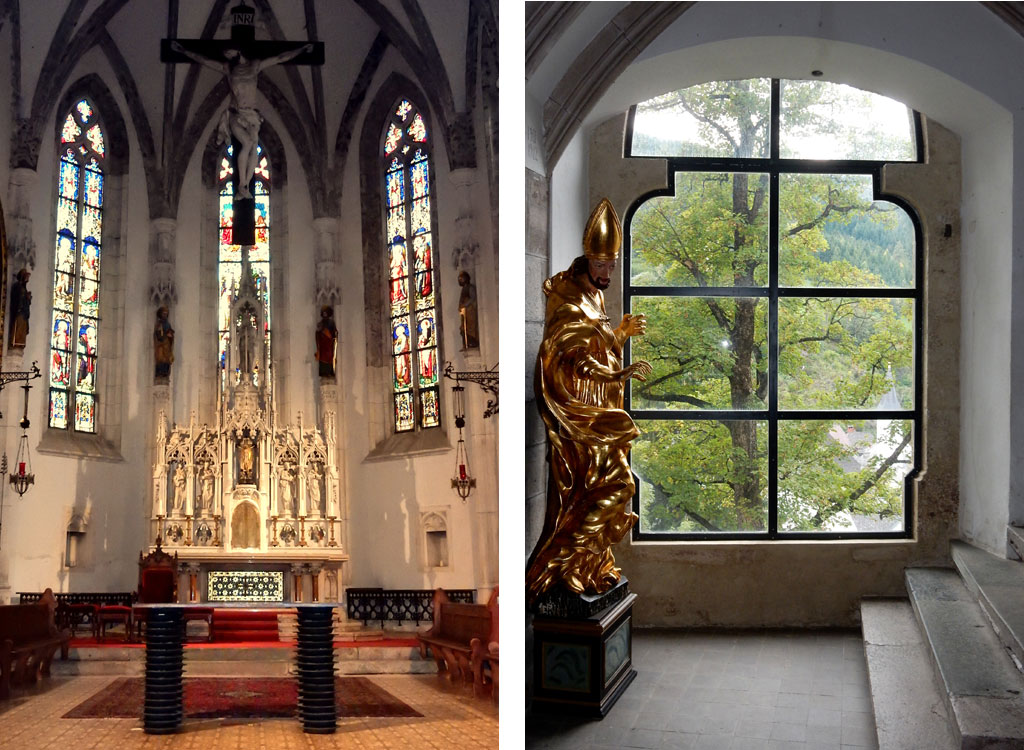
A MOUNTAIN of ORE – the RINGING of STEEL
The former bronze bells of St. Oswald’s meet the same fate as so many other bells during the First World War. They are dismantled in 1916 and melted down for the war effort. That said, the two oldest bells are able to remain until 1922. In that year, the church acquires 4 new bells made of steel.
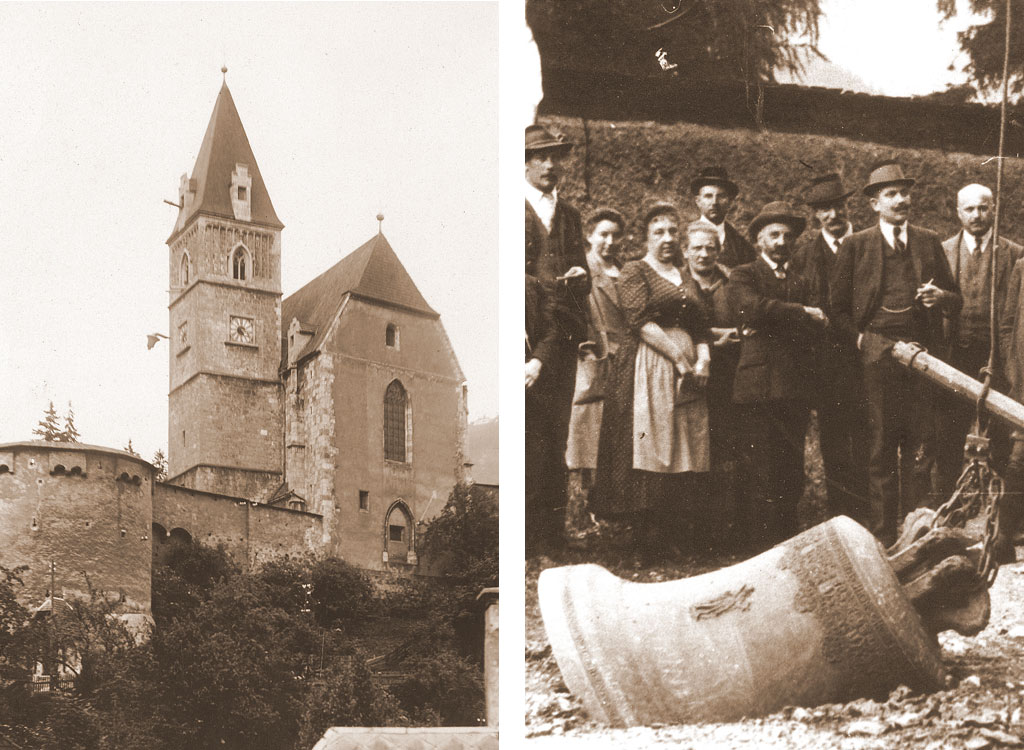
The chime of that beautifully tempered steel rings out powerfully across our town, echoing from the mountains as well as in the soul of man.
Audio: church bells ringing
How rusty saints are restored to former splendor and the miner’s life story.
An unconventional “show project”.
It is now more than 50 years since the last members of the Mesner family left the ancient walls of St. Oswald. In 2020, the former “Mesner tower” became the new home for those who were moved out of the church more than 100 years ago, the “discarded” saints that once resided in the baroque interior.
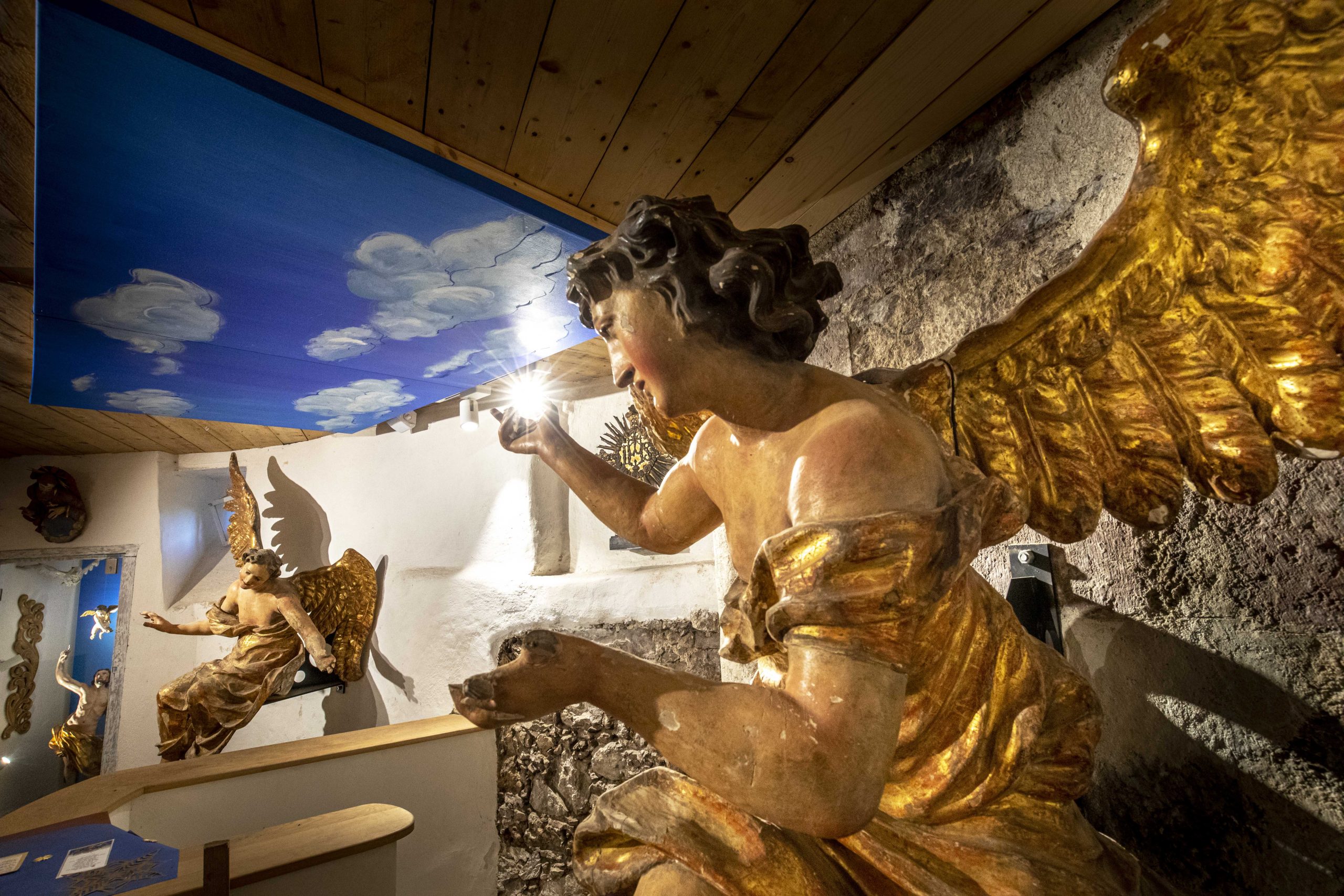
But even more – the “Mesner tower” was transformed into a new home to former mining life stories. While today the mighty machines of Central Europe’s most modern open-cast mine are literally “moving mountains” the “Mesner tower” gives a voice to all those who did their daily work in the former mines and workshops of the Erzberg.

Curious now?
Come and visit us – hear and see for yourself the miner’s life story, how faith finds its expression in their life and how tradition lives on today.

